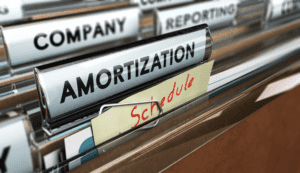Content

In this context, the most useful measure of profitability is return on capital . The result is shown as a percentage, determined by dividing relevant income for the 12 months by capital employed; return on equity shows this result for the firm's shareholders. Firm value is enhanced when, and if, the return on capital, which results from working-capital management, exceeds the cost of capital, which results from capital investment decisions as above.

For cash purposes, you need to think about the change in Working Capital. So in your example, if nothing changed except your AR increased by $10 bucks, yes your Net Working Capital is higher. However, to check the change in cash, you subtract the increase in NWC for those two periods. Also, go back to your basic understanding of movements in AR or AP.. If you made a sale, but didnt collect the cash that is a use of cash- or the income you recognized on the income statement wasn't cash income and needs to be adjusted. For AP, if you don't pay someone you owe an expense, you saved the cash, thus creating a source of cash. You include change in cash as a part of change in overall working capital...
How Net Working Capital Impacts The Value Of Your Business
Increasing any of these liabilities decreases the use of cash, which all companies like, a lot. This ebb and flow of their business cycle give them more “cash” to use to operate their business. Changes in working capital will help you determine where the business is in its working capital cycle. Understanding this topic will give you a great insight https://www.bookstime.com/ into the free cash flow of any company and how to use it as well as where it comes from in the process. If your business is constantly struggling to maintain a healthy cash flow, you can improve your net working capital in a few ways. The non-cash working capital investment varies widely across the five approaches that we have described here.

The future cash flows that enter into the equation for DCF are the free cash flow figures as discussed above. As mentioned in the first Change in Net Working Capital section, NCWC is by default what analysts and accountants refer to when they say “working capital” on a cash flow statement.
Change In Net Working Capital Nwc Formula
If the company's owed money, it's entitled to past-due amounts that customers still owe. •Provides investors with an idea of the company’s underlying operational efficiency and its short-term financial health. The key is to remember how the positive number and negative number correspond to our company and what it means to the growth of our company. Again notice the similarities in the language that each company uses when differentiating between assets and liabilities.
- If your company has unused long-term assets like old equipment, consider selling them for cash if those assets are still in good condition.
- If a business has significant capital reserves it may be able to scale its operations quite quickly, by investing in better equipment, for example.
- For instance, in the United States, the Eximbank and the SBA work together to offer such programs to US companies through participating lenders.
- Marketable securities, accounts receivable (A/R), and inventory are also considered current assets.
- The fundamental purpose of even discussing working capital is about cash flow needs of a business.
- A company's net working capital is the difference between its current assets—cash, accounts receivable, inventory and finished goods—and current liabilities—debt/accounts payable—.
Current assets are any assets that a business can reasonably expect to sell or use to cover operating costs for the year or the current operation cycle. Net working capital is used in various other financial formulas that deal with cash flows.
Ap & Finance
It is a measure of a company’s liquidity and its ability to meet short-term obligations, as well as fund operations of the business. The ideal position is to have more current assets than current liabilities and thus have a positive net working capital balance. On the same line, a change in the net working capital gives us an idea of the cash position of a company. If the change is positive, it would mean there is more cash outflow in the form of more current assets. If the difference in the net working capital is negative, it would mean that current liabilities have increased more, such as an increase in bills payables. Net Working capital, in very simple terms, is basically the amount of fund which a business needed to run its operations on a daily basis.
- This metric is used mainly to assess if the company is an investment risk.
- If this is increasing, the company is delaying the use of cash to pay income taxes to the government.
- The advantage of this approach is that it smoothes out year to year shifts, but it may not be appropriate if there is a trend in working capital.
- Sometimes, companies also include longer-term operational items, such as Deferred Revenue, in their Working Capital.
- What is the status of various metrics over varying lengths of time?
Thus, Net Working Capital aims to provide funds to finance your current assets by current liabilities. You need to pay back such liabilities within a short time period, typically twelve months. Accordingly, Net Working Capital showcases the ability of your business to pay off its liabilities in a short period of time.
Your Full Guide To Small Business Invoice Factoring
If you’d like to check in on your business’s ability to grow and invest, calculating your net working capital is a great place to start. If you’re looking to grow your business, you need to know your net working capital and how it affects your business’s potential. This analysis will then inform the line-item breakdowns exhibited in your LOI, so there is no confusion at the close regarding which items are transferred to the buyer and which remain in your control. Only when there are big differences in changes in working capital will you see a divergence between FCF and owner earnings. I was too caught up with whether it should be excluded or included and how to calculate it. Based on just change in working capital alone, Microsoft today is the better and more efficient business.
Learn financial statement modeling, DCF, M&A, LBO, Comps and Excel shortcuts. But if the change in NWC is negative, the net effect from the two negative signs is that the amount is added to the cash flow amount. When calculating free cash flow, whether it be on an unlevered FCF or levered FCF basis, an increase in the change in NWC is subtracted from the cash flow amount. As a sanity check, you should confirm that if the NWC is growing year-over-year, the change should be reflected as a negative , and the change would be positive if the NWC is declining year-over-year.
The non-cash working capital is substantially higher than the working capital in both years. We would suggest that the non-cash working capital is a much better measure of cash tied up in working capital. When I'm interviewing and breaking down the FCFF formula, I say Changes in NWC except for cash.
Net working capital can also give an indication of how quickly a company can grow. If a business has significant capital reserves it may be able to scale its operations quite quickly, by investing in better equipment, for example. Current installments for long-term debt such as small business loans. The non-cash working capital increased by $307 million from last year to this year. When forecasting the non-cash working capital needs for the Gap, we have several choices. It's easier to think about the movements independently and how they affect cash.
Current Assets And Liabilities
Generally, the larger your net working capital balance is, the more likely it is that your company can cover its current obligations. As a specialty retailer, the Gap has substantial inventory and working capital needs. At the end of the 2000 financial year , the Gap reported $1,904 million in inventory and $335 million in other non-cash current assets.
- For AP, if you don't pay someone you owe an expense, you saved the cash, thus creating a source of cash.
- In practice, you may hear people refer to working capital in both the sense that is includes and excludes cash.
- And there is always the possibility of unforeseen circumstances.
- We still have positive NWC but it's decreasing, meaning we have less money tied up in NWC.
- Does your company struggle to cover its current outstanding debts?
- The terms used may sound complex, but in truth, they are easier to comprehend than expected.
- Your company’s working capital is the very reason you are still in business today.
If IBM can reduce inventories, it may achieve a zero CCC without extending its payment period to creditors. We will back out cash and investments in marketable securities from current assets. This is because cash, especially in large amounts, is invested by firms in treasury bills, short term government securities or commercial paper. While the return on these investments may be lower than what the firm may make on its real investments, they represent a fair return for riskless investments. Unlike inventory, accounts receivable and other current assets, cash then earns a fair return and should not be included in measures of working capital. The working capital cycle , also known as the cash conversion cycle, is the amount of time it takes to turn the net current assets and current liabilities into cash.
Negativeworking Capital Or Changes
In the DCF, the end result is FCF, so cash from the balance sheet is not a factor. Cash from the balance sheet is indirectly accounted for in your sales, cogs, and expenses. "This approach is further reinforced by the fact that to get to the enterprise value you add all the value of all the non-operating assets, of which cash is part." Wrong, in EV, cash is netted out. They look at their balance sheet and determine that they have total current assets of $85,000. In the formula for free cash flow to equity, the change in net working capital is subtracted.
Many industries have a higher percentage of current assets relative to the total assets on their balance sheet. The net working capital ratio compares the percentage of a company's current assets to its short-term liabilities. This ratio can be used to determine whether or not a company has sufficient current assets to cover its current liabilities. If the final value for Change in Working Capital isnegative, that means that the change in the current operating assets has increased higher than the current operating liabilities. We could also refer to this as non-cash working capital because the companies current assets include cash, which we need to exclude because it is not used to operate the business. Next, add up all the current liabilities line items reported on the balance sheet, including accounts payable, sales tax payable, interest payable and payroll. The financial model for forecasting net working capital is commonly driven by a range of processes within your company’s financial workflows related to current assets and current liabilities.
Current Assets
If Exxon decided to spend an additional $3 billion to purchase inventory, cash would be reduced by $3 billion, but materials and supplies would be increased by $3 billion to $7.1 billion. Changes in working capital are reflected in a firm’s cash flow statement. Here are some examples of how cash and working capital can be impacted. As the different sections of a financial statement impact one another, changes in working capital affect the cash flow of a company.
Line Of Credit
That is, you need to use discounting and compounding techniques in capital budgeting. However, such techniques do not play a significant role in managing your current assets. If the line is close to being entirely consumed, there is a greater risk of a liquidity problem. Systems in place in almost all companies today facilitate this method of delivering spare parts to customers. The manufacturing companies are charging a higher price for the parts – reflected in our COGS ratio – to compensate them for this service. As you saw in our P&L, the COGS ratio is forecasted to average 32% during the ‘plan’ period and beyond, versus 28% for the current year.
